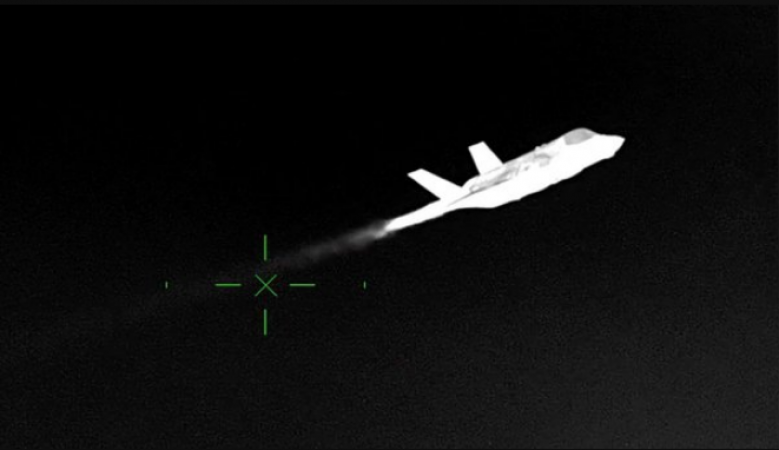
China: A tiny infrared search-and-track system was built by defense industry engineers in southwest China, according to the team, and can detect the heat signature of an unusually fast-moving aircraft from a far.
The medium-wave infrared system has successfully detected and tracked civilian aircraft from a distance of 285 km (177 mi), according to a paper published Friday in the peer-reviewed Chinese journal Infrared and Laser Engineering.
The team, led by electrooptics engineer Liu Zhihui of defense contractor Sichuan Jiuzhou Electric Group Company, claimed that the infrared spectrum image could clearly identify the target's outline, rotor, tail and number of engines.
According to the researchers, the heat-seeking radar can also emit a powerful laser beam to illuminate the target aircraft and gather additional data such as the number of windows on the aircraft.
According to Liu and his colleagues, small enough to mount on a car, airplane, or even a satellite, the device can be used for a variety of purposes, including "surveillance, early warning and (missile) guidance".
The use of long-range infrared radar is critical in stealth warfare.
Even though a military aircraft using stealth technology can avoid conventional radar, it still generates heat from its body and engine.
Since relatively long infrared waves, which are physically equivalent to low-energy light, are readily absorbed by the atmosphere, most infrared cameras are only able to see up to a distance of 20 km.
However, some strong heat signals in the mid-infrared range can pass through a wind "window" and travel a great distance.
According to a 2015 report by Flightglobal.com, China has built a heat-seeking radar for its J-20 stealth aircraft that can detect the signature of a US B-2 stealth bomber and F-22 fighter from 150 km and 110 km. can put away, respectively.
According to Liu's team, it is difficult to extend the detection range of infrared radar. Only a small number of photons, or light particles, can pass through the tiny lens of the detector. According to Liu's team, another problem arose from the aircraft's speed.
A rapidly moving target can leave behind a fuzzy image and affect the accuracy of detection and tracking because infrared radar has to be in the sky for long periods of time to detect distant threats with an incredibly weak signal. Had to "stare".
The Chinese team claimed that the key to its innovation was an internal fast-rotating mirror, which could effectively eliminate motion-blur, by accurately and automatically adjusting the direction of the beam of light.
The researchers claim that the radar can scan the entire sky in a matter of seconds in distant target search mode, which is faster than most heat seekers currently in use.
According to Liu's team, the device's performance remained stable during testing under harsh conditions with temperatures ranging from minus 40 to 60 degrees Celsius.
The researchers claimed that since the radar was in passive mode and was not emitting signal, it would be difficult for the enemy to locate it. Because of the difficulty of jamming infrared signals with current technology, the device would have a much better chance of surviving electronic warfare.
Another long-range infrared radar created by scientists at the Changchun Institute of Optics, Fine Mechanics and Physics of the Chinese Academy of Sciences in northeast China reportedly detected an aircraft's heat signal from a distance of 225 kilometers.
On a clear night, the device detected and tracked the International Space Station at a distance of more than 1,000 kilometers.
According to military experts, many variables, such as the weather, atmospheric background temperature, angle of view of an aircraft engine, and heat reduction technology, can affect the effective working range of a heat radar.
Countries are competing to develop cutting-edge infrared technology that could influence the outcome of a war, including those of China and the United States.
These initiatives include a global early warning system based on low-orbit satellites and airplanes that can detect the heat generated by a hypersonic weapon from thousands of kilometers away, hypersonic heat-seeking missiles as small as a car. Can identify the target and attack it. , and hypersonic heat-seeking missiles.
China energy Crisis: Sichuan looks to coal as hydro dams run dry
China slashes key mortgage rate to aid crisis-hit property market